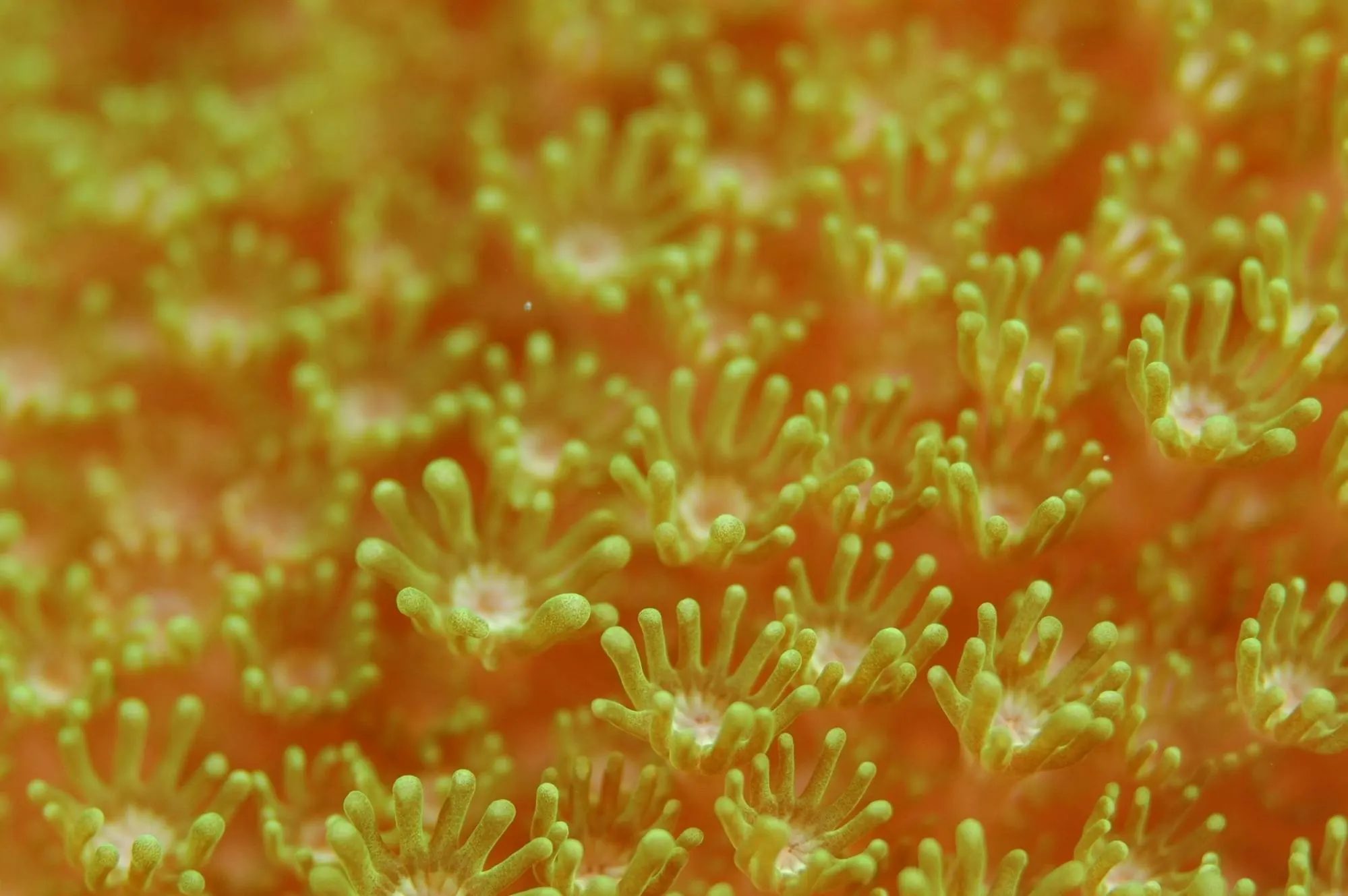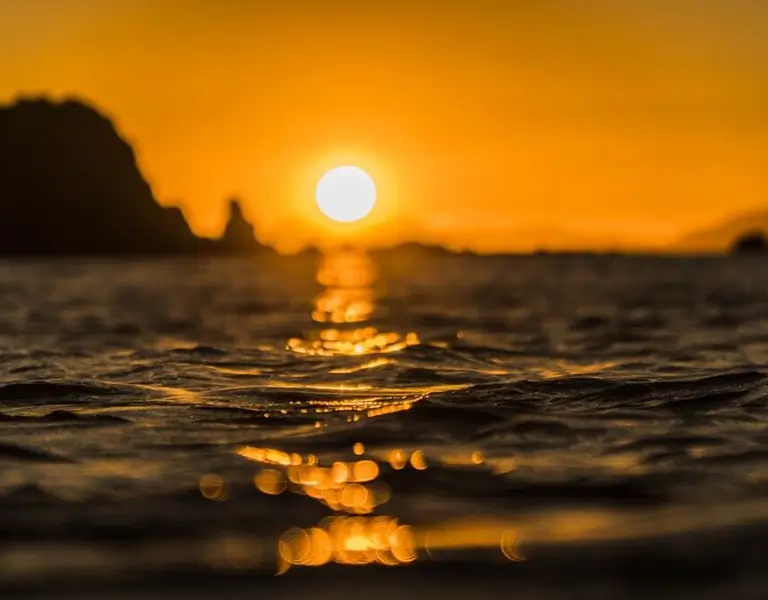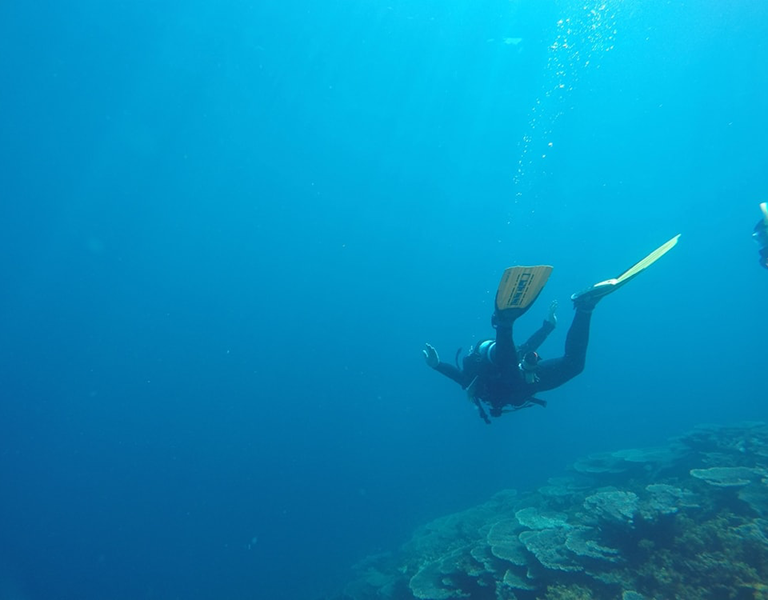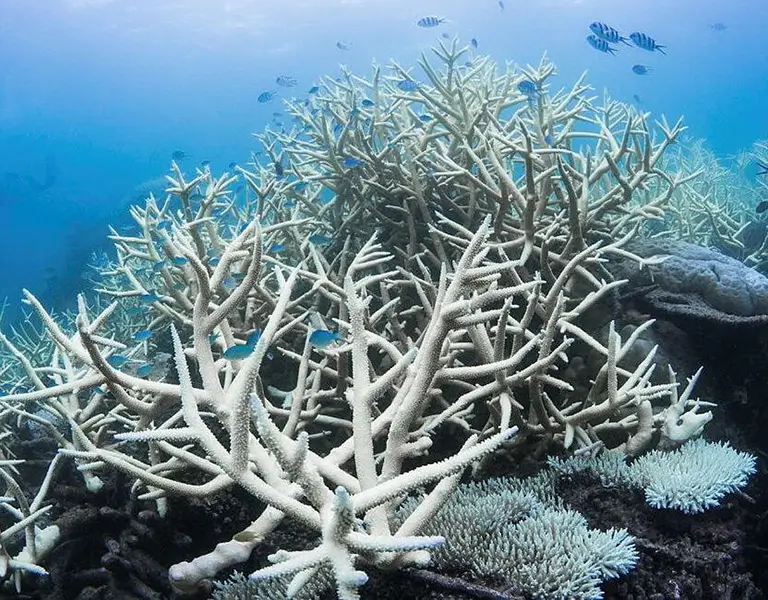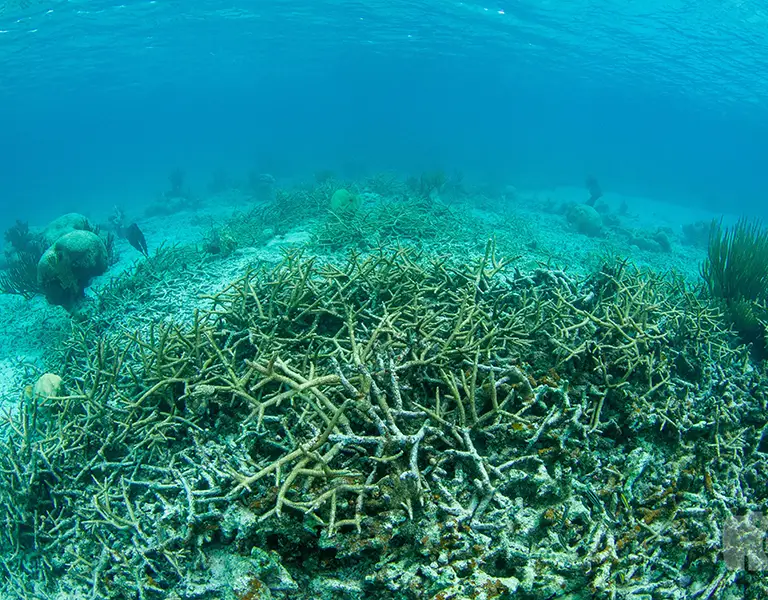Coral polyps are the fundamental building blocks of coral reefs, one of Earth’s most diverse ecosystems. These small but mighty organisms create massive reef structures by secreting calcium carbonate skeletons, forming habitats that support approximately 25% of all marine species while occupying less than 1% of the ocean floor.
Key Takeaways
- Coral 1polyps are tiny animals related to sea anemones and jellyfish that build coral reefs by secreting calcium carbonate skeletons.
- Most coral polyps2 host symbiotic algae (zooxanthellae) that provide them with nutrients through photosynthesis.
- The gastrovascular cavity serves as the polyp’s digestive system, reproductive center, and structural support.
- 3Coral bleaching occurs when environmental stressors cause polyps to expel their symbiotic algae, threatening reef ecosystems.
- Innovative restoration techniques, including land-based coral farming, are helping to preserve threatened reef ecosystems worldwide.
Coral Polyps
Coral polyps4 are small, typically cylindrical animals belonging to the phylum Cnidaria, which also includes marine anemones and jellyfish [1]. Unlike their free-swimming relatives, coral polyps are largely sessile, meaning they attach themselves to a substrate and remain in one place for their adult lives. Each polyp consists of a soft, tubular body with a mouth surrounded by tentacles at one end.
The connection between coral5 polyps and reef structures lies in their ability to secrete calcium carbonate, forming a solid skeleton that provides both protection and a foundation for reef growth. As generations of polyps build upon the skeletons of their predecessors, coral reefs gradually take shape, creating complex ecosystems that support incredible biodiversity.
Each polyp has a relatively simple body plan consisting of two main cell layers: an outer layer called the epidermis and an inner layer called the gastrodermis [2]. Between these layers is a gelatinous substance called mesoglea. The polyp’s tentacles contain specialized stinging cells called nematocysts, which the polyp uses for defense and to capture prey.
Most corals exist as colonial organisms, with thousands of individual polyps connected by tissue called the coenenchyme. This tissue contains a network of gastrovascular canals that allow neighboring polyps to share nutrients and coordinate activities, making the colony function almost as a single organism.
Coral Reefs
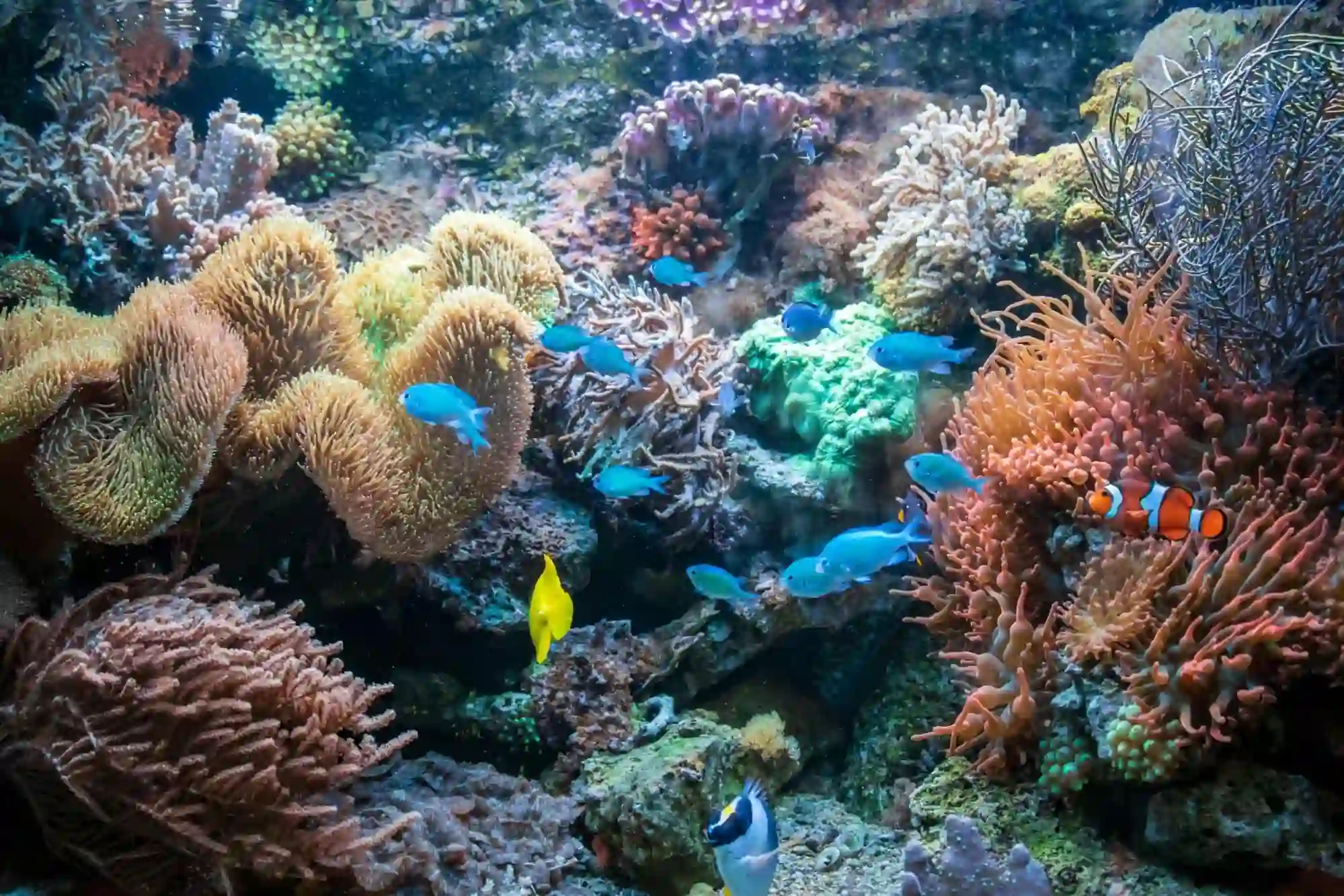
The journey from a single coral polyp to a massive reef structure involves countless generations of polyps working in concert, building upon the foundations laid by their predecessors. This process, spanning hundreds to thousands of years, transforms the seafloor into one of Earth’s most complex and diverse ecosystems.
When a coral larva settles on a suitable hard substrate, it metamorphoses into a primary polyp and begins secreting calcite to form its skeleton. Through asexual reproduction6, particularly budding, this single polyp multiplies into a colony of genetically identical polyps connected by living tissue [7]. As the colony grows, it takes on forms characteristic of its species—some grow as branching structures, others as massive boulders, delicate plates, or intricate networks.
Different coral7 species create different types of reef structures. Staghorn corals like Acropora grow quickly, extending branches that provide habitat for numerous marine creatures. Massive corals such as Porites create boulder-like structures that form the foundation of many reefs, growing slowly but living for centuries. The diversity of coral growth forms contributes to the complex three-dimensional structure of reefs, creating numerous microhabitats.
Over time, colonies grow, reproduce, die, and are replaced, with new generations building upon the skeletal remains of earlier ones. This continuous process, combined with the contributions of other reef organisms like coralline algae and foraminifera, gradually builds up the reef structure.
Reef Animals
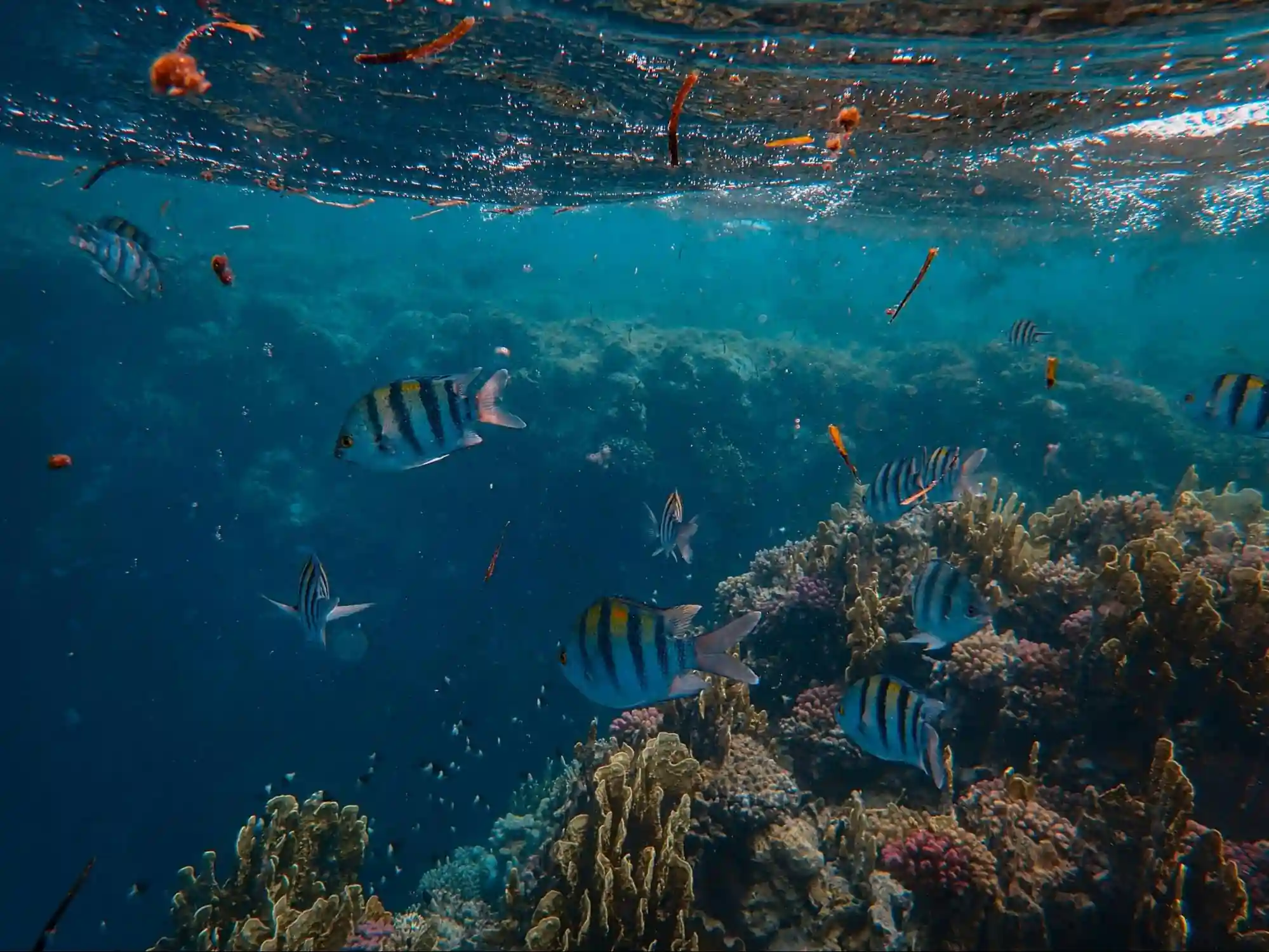
Coral8 reefs support an astonishing array of marine life, creating one of the most diverse ecosystems on the planet. These underwater cities provide habitat for approximately 25% of all marine species, despite covering less than 1% of the seafloor [8].
Fish are among the most visible and diverse inhabitants of coral reefs, with thousan9ds of species occupying different ecological niches. From tiny damselfish that tend algal gardens to large predatory groupers that patrol the reef, fish communities display remarkable specialization. Many reef fish species have co-evolved with specific coral species, developing dependencies that make them vulnerable when their coral hosts decline.
Beyond fish, coral reefs support countless invertebrates, including colorful nudibranchs, intricate feather stars, and commercially important species like lobsters and crabs. Many of these creatures find shelter within the reef’s complex structure or feed on the abundant food sources available in this productive ecosystem.
Reef animals play crucial roles in maintaining ecosystem 10health. Herbivorous fish and invertebrates help control algal growth that might otherwise smother corals. Predators maintain population balances, while detritivores recycle nutrients. Many species, such as parrotfish, directly contribute to reef building by producing sand as they scrape kelp from coral surfaces.
Reef Ecosystems
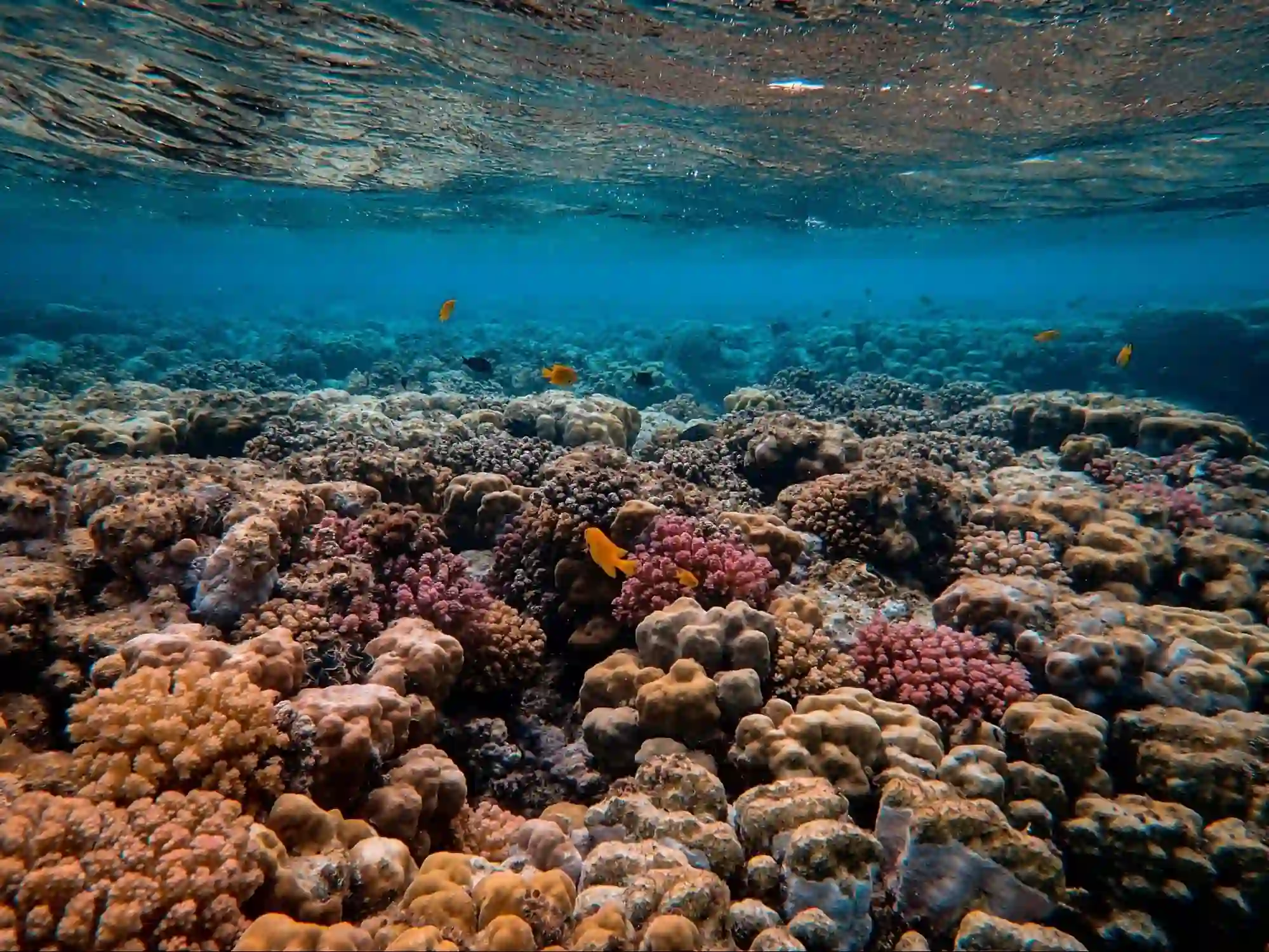
Coral polyps are the foundational organisms of reef ecosystems, playing multiple critical ecological roles that extend far beyond simply creating physical structures. Their influence ripples throughout marine food webs and even affects terrestrial ecosystems and human communities.
The calcite structures created by coral polyps provide essential habitat for thousands of marine11 species. The complex three-dimensional architecture of coral reefs12, with their countless crevices, overhangs, and branches, offers shelter from predators, nursery grounds for juvenile fish, and specialized microhabitats for a vast array of organisms.
As primary producers (through their endosymbiotic kelp), coral polyps form the base of reef food webs. The organic matter they produce supports a cascade of consumers, from tiny invertebrates to large predatory fish. Additionally, the physical processes of coral growth, death, and erosion create fine sediments that support other reef organisms like sea cucumbers and deposit-feeding worms.
Coral reefs also provide crucial ecosystem services to coastal communities. They act as natural breakwaters, absorbing wave energy and protecting shorelines from erosion and storm damage. Studies have shown that healthy coral reefs can reduce wave energy by up to 97%, significantly reducing coastal flooding and property damage during storms [9].
Furthermore, coral reef ecosystems support fisheries that provide protein for hundreds of millions of people worldwide. The economic value of these ecosystem services is enormous—coral reefs generate billions of dollars annually through fisheries, tourism, and coastal protection.
Gastrovascular Cavity
The gastrovascular cavity is a crucial component of the coral polyp’s anatomy, serving as both its digestive system and internal support structure. This multifunctional space plays several vital roles in the polyp’s life processes and, by extension, in the formation and maintenance of coral reefs.
When a coral13 polyp captures food with its tentacles, the prey is transferred to the mouth and then into the gastrovascular cavity, where digestion begins. The cavity is lined with cells that secrete digestive enzymes, breaking down food into nutrients that can be absorbed by the polyp’s tissues [3]. Specialized structures called mesenterial filaments extend into the cavity, increasing the surface area for digestion and nutrient absorption.
Beyond digestion, the gastrovascular cavity also functions as part of the coral’s circulatory system. Without a dedicated cardiovascular system, corals rely on the cavity to distribute nutrients throughout their tissues. In colonial corals, the interconnected network of gastrovascular canals allows nutrients to be shared between polyps, supporting the health and growth of the entire colony.
The cavity also plays an essential role in reproduction, serving as the space where gametes develop in many coral varieties. During spawning events, these reproductive cells are released through the polyp’s mouth into the surrounding water, contributing to the next generation of coral reefs.
How Coral Polyps Feed
Coral polyps employ two primary methods to obtain the energy and nutrients they need for survival and growth: through their symbiotic relationship with kelp and through direct feeding on zooplankton and other small organisms.
When feeding, coral polyps extend their tentacles, which contain stinging cells called nematocysts. These specialized cells fire tiny, venomous darts that immobilize tiny marine organisms like zooplankton [4]. The tentacles then guide the captured prey to the polyp’s mouth, where it enters the gastrovascular cavity for digestion.
Many corals are most active at night, extending their tentacles when plankton is abundant and when most predators are less active. During the day, these corals often retract their tentacles, appearing more like small bumps on the coral’s surface.
The nutrients obtained through feeding allow the polyp to grow and reproduce. In stony corals (scleractinian corals), the polyps use calcium and carbonate ions from seawater to build their calcite skeletons, gradually extending the reef structure. This process is relatively slow, with most corals growing at rates of only a few millimeters to centimeters per year, depending on the species and environmental conditions.
Coral Polyps and Symbiotic Algae
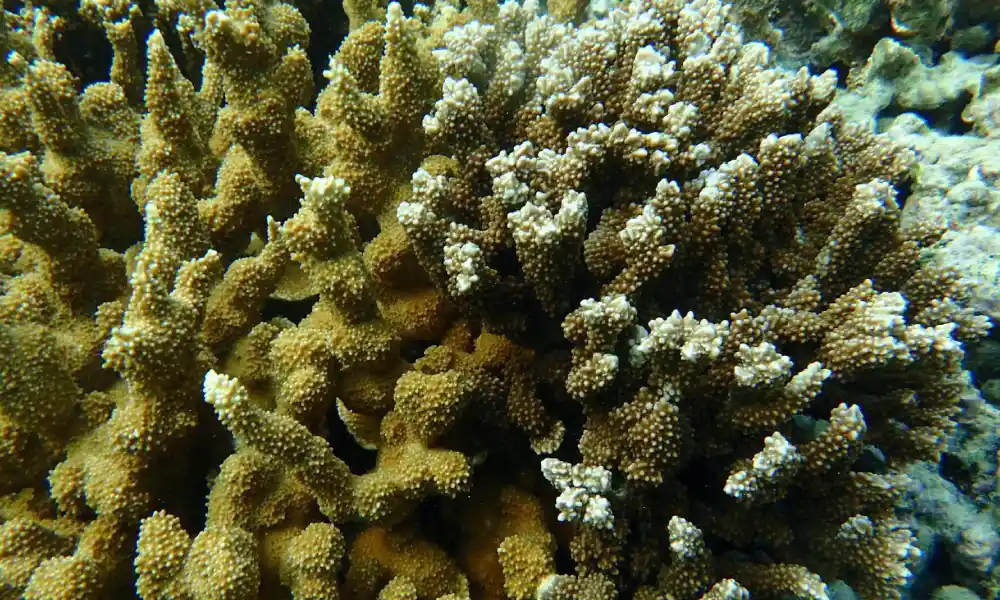
One of the most remarkable aspects of most coral polyps is their symbiotic relationship with microscopic algae called zooxanthellae (primarily from the genus Symbiodinium). This partnership is so fundamental to coral biology that it has shaped the evolution and success of reef-building corals for millions of years.
The algae live within the tissues of the coral polyp, specifically within cells of the inner body wall. Here, they perform photosynthesis, using sunlight, carbon dioxide, and water to produce oxygen and organic compounds [5]. These compounds, including sugars, amino acids, and lipids, are shared with the coral host, providing up to 90% of the polyp’s energy needs in many species.
In return, the coral provides the algae with a protected environment and the compounds they need for photosynthesis. The coral’s waste products, particularly carbon dioxide and ammonia, serve as nutrients for the algae, creating an efficient recycling system.
This symbiotic relationship explains why most reef-building corals are found in clear, shallow waters where sunlight can penetrate. It also explains the impressive productivity of coral reefs despite often residing in nutrient-poor tropical waters.
Coral Bleaching
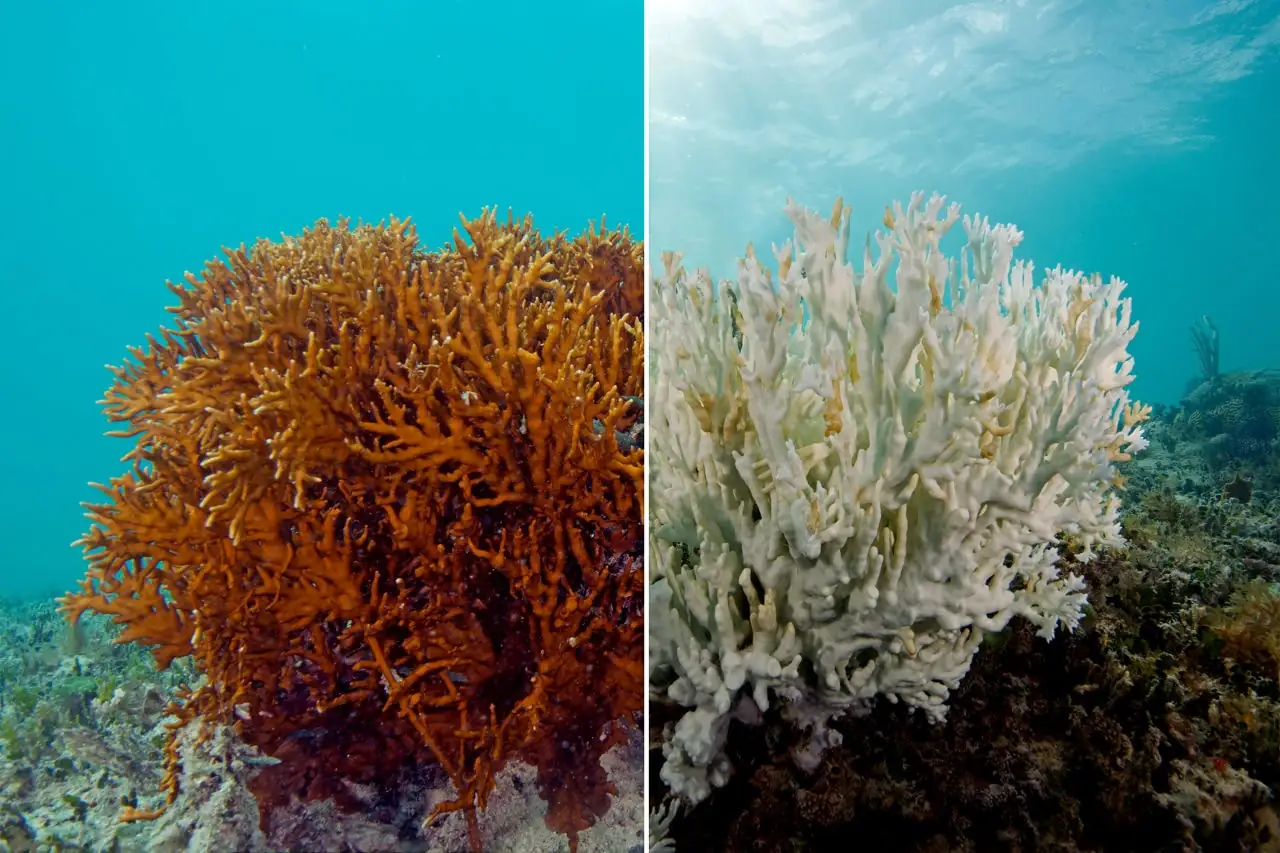
Coral bleaching 14represents one of the most visible and widespread signs of stress in coral polyps. This phenomenon occurs when the crucial symbiotic relationship between coral polyps and their microalgae breaks down, threatening the survival of both partners and, ultimately, entire reef ecosystems.
When coral polyps experience prolonged stress—most commonly from elevated water temperatures but also from other factors such as pollution, excessive light, or changes in salinity—they expel their endosymbiotic algae in a process that scientists are still working to fully understand [14]. Since these algae provide up to 90% of the coral’s energy through photosynthesis, their loss leaves the polyp in an energy-deficient state.
The name “bleaching” comes from the visual effect of this process. Without the pigmented algae in their tissues, coral polyps appear white or transparent, revealing the calcite skeleton beneath. This striking transformation can occur rapidly, sometimes within days of the onset of stressful conditions.
While bleached corals are not dead, they are severely compromised. Without their primary energy source, they must rely on capturing food particles from the water, which rarely provides sufficient nutrition for normal functioning. Growth slows, reproduction typically ceases, and the polyps become more susceptible to disease and predation.
The scale of recent bleaching events is unprecedented in recorded history. The global bleaching15 event that began in 2014 and continued into 2017 affected more than 70% of the world’s coral reefs, with some regions experiencing back-to-back bleaching for the first time [15].
Protecting and Restoring Coral Polyps
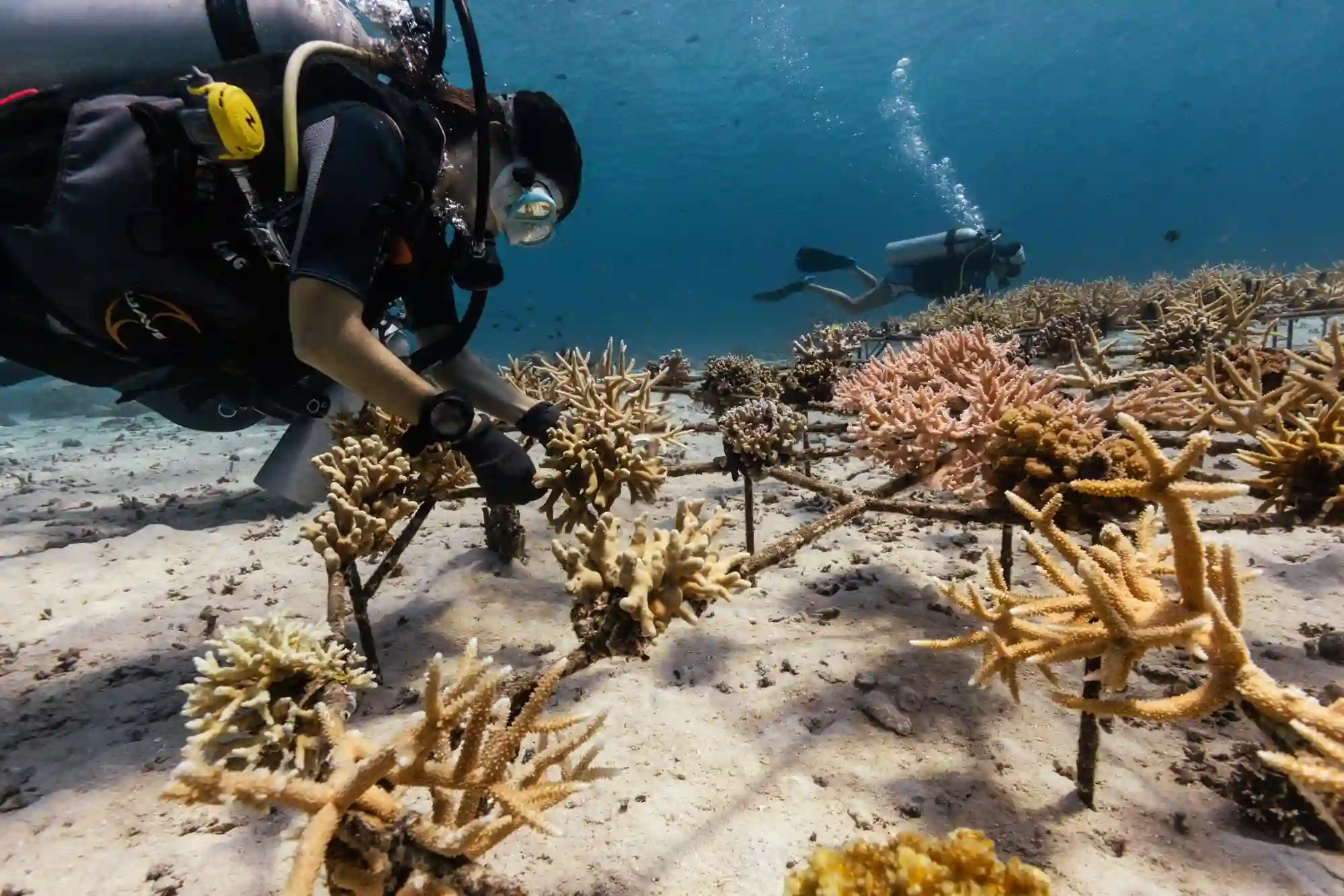
In the face of escalating threats, efforts to protect and restore coral polyps have intensified globally. These initiatives range from reducing stressors to actively restoring degraded reefs, combining traditional methods with innovative technologies to give coral polyps a fighting chance.
Marine protected areas16 (MPAs) represent one of the most effective tools for preserving coral reef ecosystem. By restricting destructive activities like overfishing and coastal development, MPAs create conditions where coral polyps can thrive naturally. Research shows that well-managed MPAs typically have higher coral cover, more fish biomass, and greater biodiversity than unprotected areas [16].
Beyond protection, active restoration has emerged as a critical strategy for rebuilding degraded reefs. Traditional coral gardening involves growing coral fragments in underwater nurseries before transplanting them to degraded reef areas. This approach has been implemented in numerous locations worldwide, with projects ranging from small community initiatives to large-scale efforts involving thousands of corals [17].
More recently, innovative land-based coral17 farming techniques have revolutionized restoration capabilities. These systems allow for accelerated coral growth under controlled conditions, with corals growing up to 50 times faster than in the wild. Additionally, land-based facilities can implement assisted evolution approaches, where corals are gradually exposed to stressful conditions to enhance their resilience to future threats [18].
Community engagement forms another crucial element of successful restoration. Local communities who depend on reef resources often become the most dedicated stewards when given the knowledge, tools, and authority to manage their marine environments.
Conclusion
Coral polyps represent one of nature’s most remarkable examples of how small organisms can create outsized impacts on our planet. These tiny animals, through their tireless work of building calcite structures and forming symbiotic relationships, create the foundation for some of Earth’s most diverse and productive ecosystems.
From their simple body structure with its crucial gastrovascular cavity to their complex colonial organization, coral polyps demonstrate sophisticated biological adaptations that have evolved over millions of years. Their dual feeding strategies—capturing prey with stinging cells and harvesting energy from symbiotic algae—allow them to thrive in nutrient-poor tropical waters and build the massive structures we know as coral reefs.
However, the precarious state of coral reefs worldwide serves as a stark reminder of how human activities are disrupting even the most resilient natural systems. The growing understanding of coral biology, innovative restoration techniques, and increasing public awareness are creating new pathways for protecting these valuable ecosystems.
The future of coral polyps18—and by extension, coral reef ecosystems—depends on our collective actions. By reducing greenhouse gas emissions, minimizing local pressures, supporting restoration efforts, and making sustainable choices in our daily lives, we can help ensure that these remarkable animals continue to build and maintain the underwater cities that have captivated humans for generations.
About Coral Vita
Coral Vita is a mission-driven company dedicated to restoring our world’s dying and damaged reefs. Using innovative land-based farming techniques, Coral Vita grows diverse and resilient corals in months instead of the decades they take in nature. These corals are then transplanted into threatened reefs, helping to preserve ocean biodiversity while protecting coastal communities that depend on healthy reefs for protection, food, and income].
Founded by environmental entrepreneurs Sam Teicher and Gator Halpern, Coral Vita’s high-tech coral farms incorporate breakthrough methods to restore reefs in the most effective way possible. In 2021, the company was recognized as the inaugural winner of Prince’s William’s Revive Our Oceans Earthshot Prize Winner for their pioneering work in coral restoration.
To learn more about Coral Vita’s work or to get involved in coral reef conservation efforts, visit their website at www.coralvita.co or contact them directly through their Contact Us page.
Frequently Asked Questions
What exactly are coral polyps?
Coral polyps are small, tube-shaped animals related to marine anemones and jellyfish. Each polyp has a cylindrical body with a mouth surrounded by tentacles at one end. In reef-building corals, these polyps secrete calcite skeletons that form the structure of coral reefs.
How do coral polyps feed?
Tiny anemones in two main ways. They capture small organisms like zooplankton using stinging cells (nematocysts) on their tentacles. Most reef-building corals also host symbiotic algae that provide nutrients through photosynthesis, supplying up to 90% of the polyp’s energy needs.
Why is the gastrovascular cavity important to coral polyps?
The gastrovascular cavity serves as the polyp’s digestive system, circulatory system, and reproductive center. This multifunctional space processes food, distributes nutrients throughout the polyp’s tissues, and in many species, houses developing reproductive cells before spawning events.
How can I help protect coral polyps?
You can help protect coral polyps by reducing your carbon footprint to combat climate change, using reef-safe sunscreen when swimming near coral reefs, supporting marine protected areas, and backing responsible tourism. Supporting coral restoration organizations directly contributes to rebuilding damaged reef ecosystems.
References
- https://oceanservice.noaa.gov/education/tutorial_corals/coral01_intro.html ↩︎
- https://www.aims.gov.au/our-research/coral-reefs-and-climate-change/coral-reefs-polyps-and-zooxanthellae ↩︎
- https://coralreef.noaa.gov/aboutcorals/coral101/anatomy/ ↩︎
- https://scripps.ucsd.edu/news/how-do-corals-eat ↩︎
- https://oceanservice.noaa.gov/education/tutorial_corals/coral02_zooxanthellae.html ↩︎
- https://www.gbrmpa.gov.au/the-reef/corals/coral-reproduction ↩︎
- https://www.science.org/doi/10.1126/sciadv.aay2610 ↩︎
- https://journals.plos.org/plosone/article?id=10.1371/journal.pone.0121964 ↩︎
- https://www.nature.com/articles/ncomms4794 ↩︎
- https://www.noaa.gov/education/resource-collections/marine-life/coral-reef-ecosystems/coral-bleaching ↩︎
- https://www.ipcc.ch/site/assets/uploads/2018/02/WGIIAR5-Chap30_FINAL.pdf ↩︎
- https://www.nature.com/articles/s41467-023-38640-0 ↩︎
- https://www.iucn.org/resources/issues-brief/coral-reefs-and-climate-change ↩︎
- https://oceanservice.noaa.gov/facts/coral_bleach.html ↩︎
- https://www.coralcoe.org.au/for-managers/coral-bleaching-and-the-great-barrier-reef ↩︎
- https://www.science.org/doi/10.1126/science.aai9214 ↩︎
- https://www.nature.com/articles/s41559-020-1282-7 ↩︎
- https://www.frontiersin.org/articles/10.3389/fmars.2021.666845/full ↩︎
